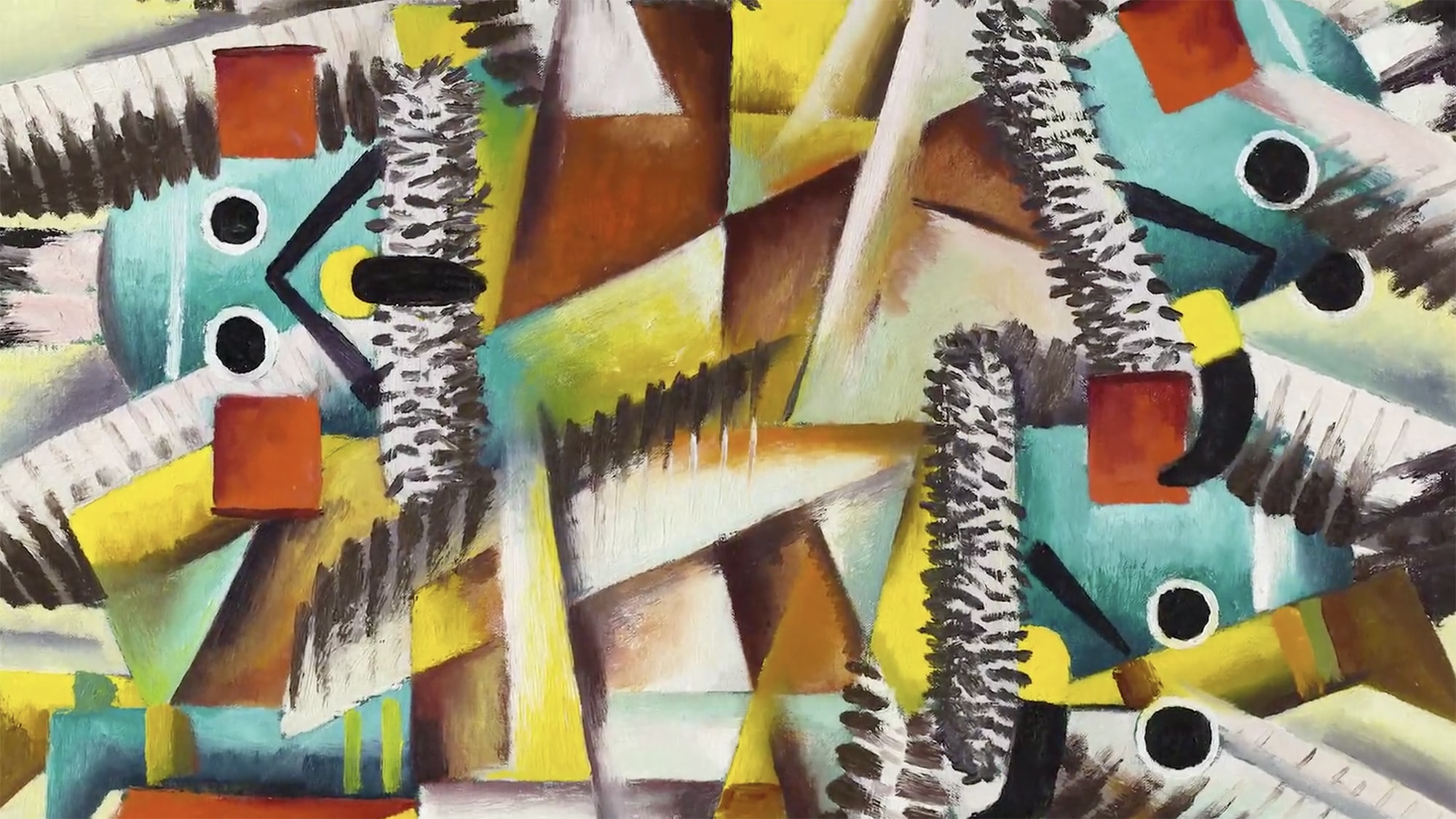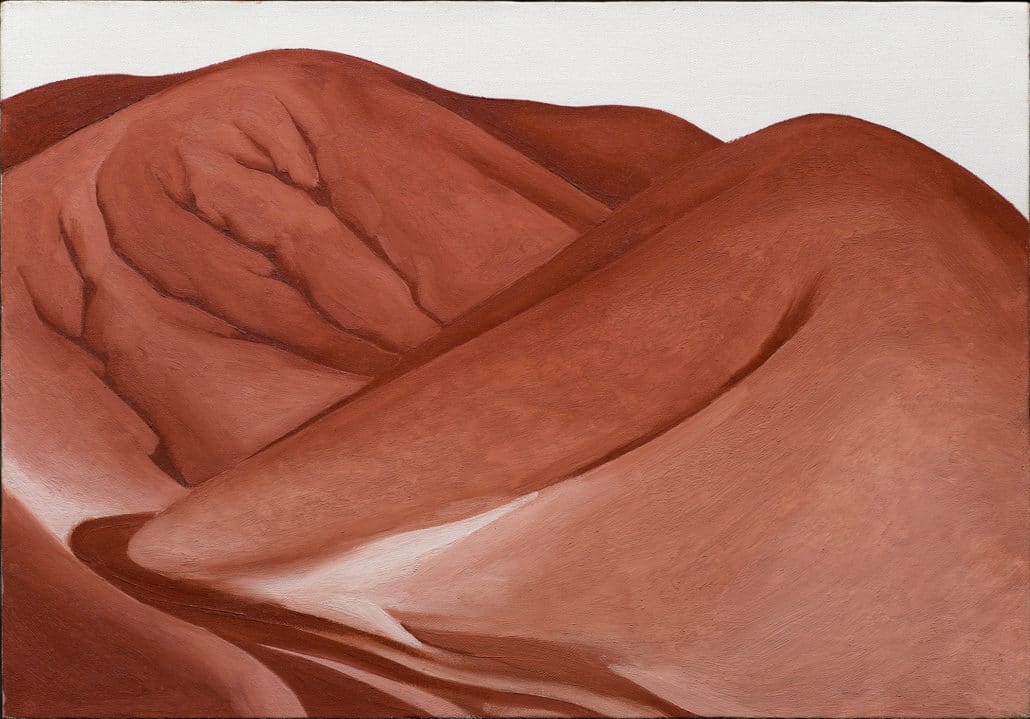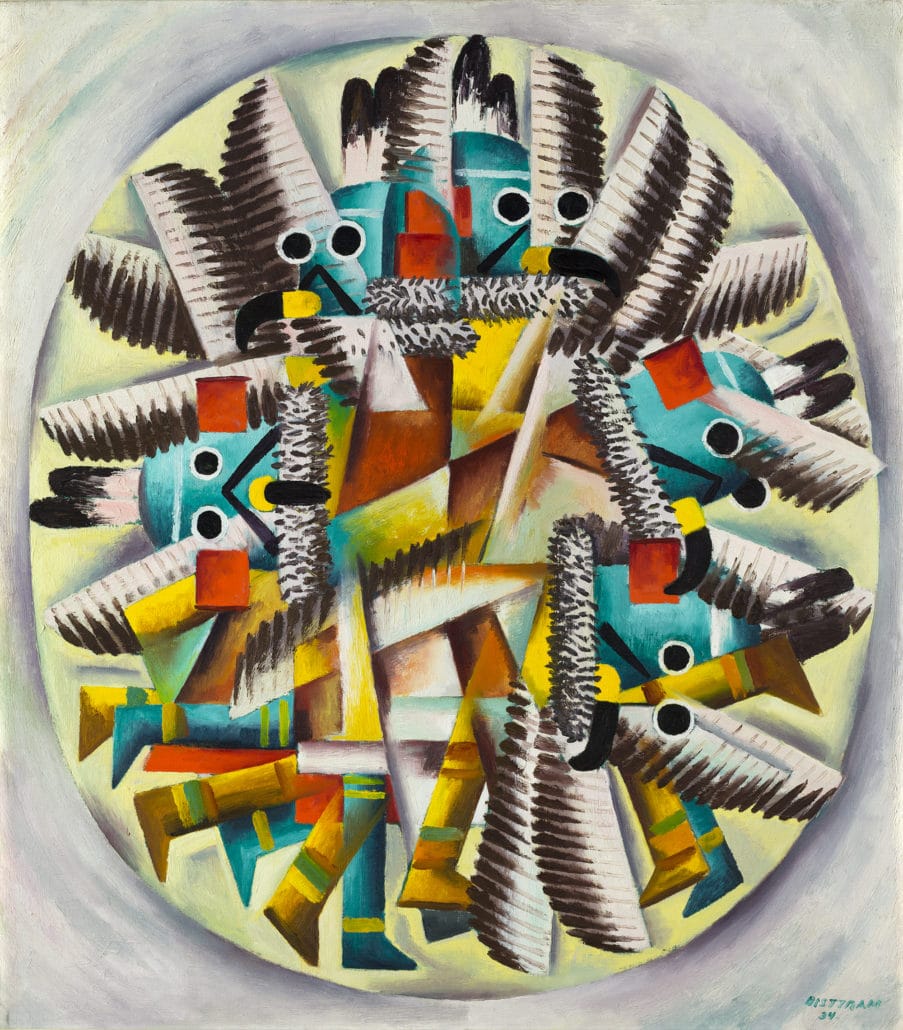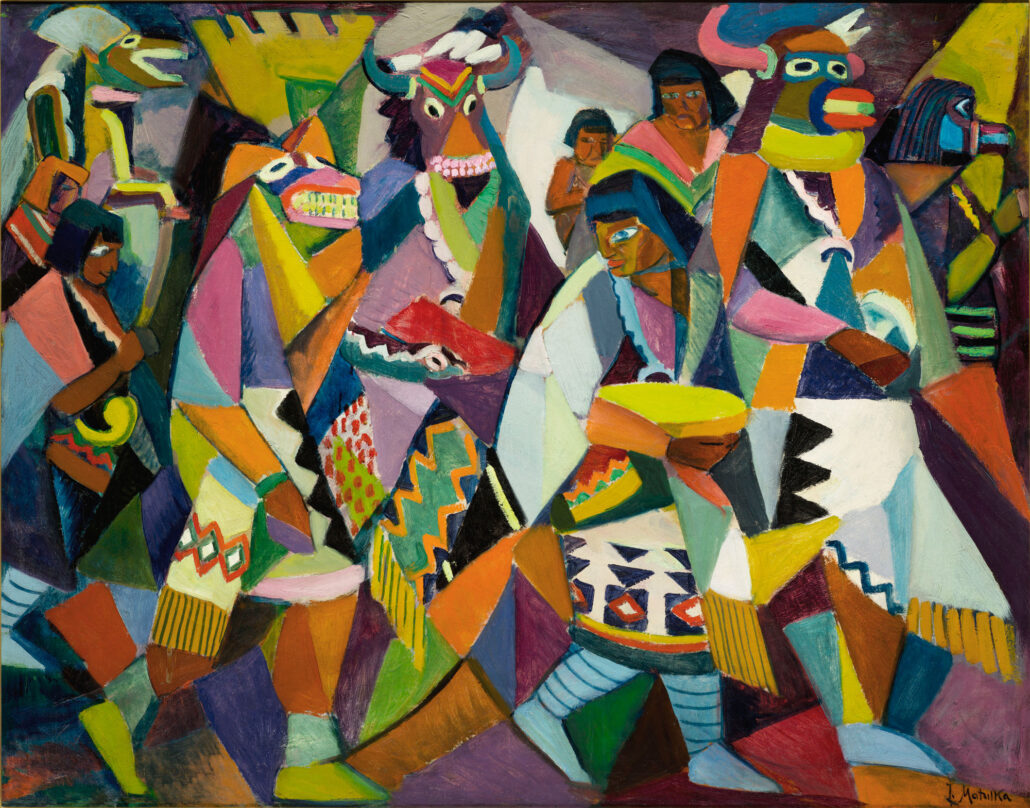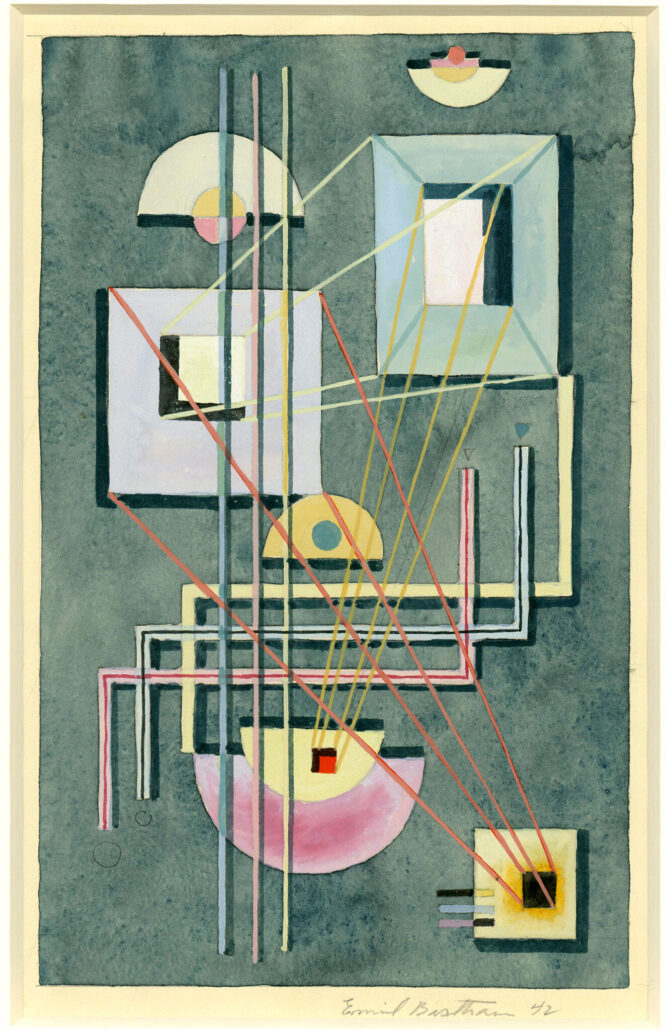Modern art styles rejected an inherent concept in European art that art should copy real life, this is especially seen in cubist and other abstract art styles. Artists Pablo Picasso and George Braque developed cubism in France in the early 1900s, wherein they would break down a recognizable object into geometric forms (and sometimes multiple angles) to emphasize the two-dimensional plane of the canvas.
Cubism and Abstraction in the American West
Artists like Jan Matulka adapted this style to western subjects as seen in his painting Indian Festival in Arizona. In this painting Matulka broke down the figures and their costumes into geometric shapes, emphasizing the color and movement of the festival scene.
Abstract art aims to create a summary or suggestion of the real world. Artists of the American West accomplished this in many ways by manipulating visuals like line, form, color, and light. This can result in scenes like Georgia O’Keeffe’s simplified landscapes, or in Emil Bisttram’s non-objective works that do not look like the real world at all, but emphasize form and shape.
